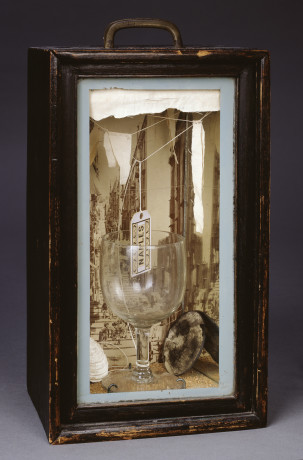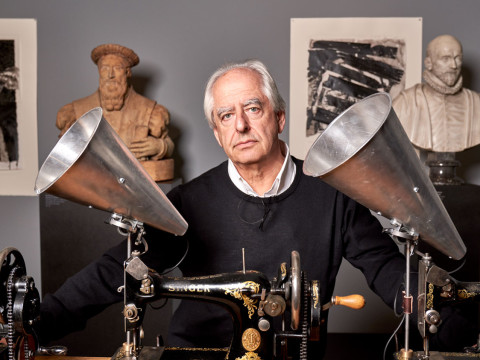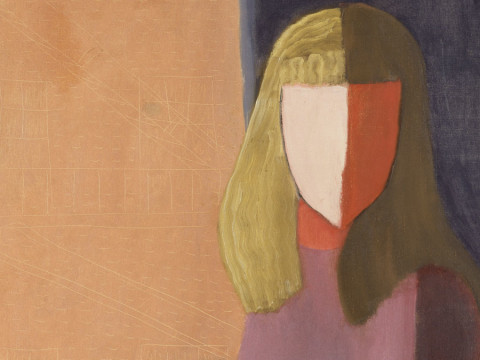
Joseph Cornell: a beginner's guide
By Tom Jeffreys
Published on 2 July 2015
This July, the Royal Academy opens a landmark exhibition devoted to the beguiling works of Joseph Cornell – one of the most original artists of the 20th century.
Cornell is a singular figure in the history of art – best known for his pioneering use of collage and assemblage. But this is the first major solo exhibition of his work here in the UK for almost 35 years. Many of his works are in private collections; some have never left the USA. For those new to Cornell, here are six key facts to help you enter his unique imagination.
Cornell hardly left New York
Joseph Cornell was born in Nyack in 1903 and rarely left New York City where he lived as an adult. He was born into a well-off family, but in 1917 the death of his father, a textile designer, placed the family in strained circumstances. Cornell lived for most of his life in an ordinary house on Utopia Parkway in Queens, with his widowed mother and disabled brother Robert. Cornell devoted much of his life to caring for his brother, who had cerebral palsy.
Cornell was an avid collector
Cornell’s art was born of his love for collecting. He used to wander the streets of Manhattan, browsing the antique bookshops and dime stores, buying books, engravings, prints, photographs and other objects that caught his eye. These were rarely things of conventional value: as Deborah Solomon writes in RA Magazine, Cornell “attached the highest value to objects of little or no intrinsic worth” – cork balls, metal springs, maps, shells, and marbles. The resulting collections – especially his dossiers of paper ephemera – give us an insight into the amazing breadth and depth of Cornell’s interests, from opera and European history to ornithology and astronomy.
He was fascinated by the idea of travel
Perhaps paradoxically, Cornell was fascinated by travel – he was captivated by far-away times and places that he would never visit. Hence the title of the RA’s exhibition, Wanderlust: a German loan word with strong links to European Romanticism, it means a powerful impulse to trek or travel. Cornell used words like “explorations” and “voyaging” to describe his artistic processes: collecting and making were the ways in which his imagination explored the world. It was, as Wanderlust’s curator Sarah Lea puts it, “an alternative to sketching”. This idea of imaginary travel became Cornell’s guiding artistic principal: in the end he chose the freedom of the mind over any real travels.
Joseph Cornell: armchair voyager
The title of our Joseph Cornell exhibition is 'Wanderlust'. Curator Sarah Lea describes how this theme is closely linked to Cornell's artistic practice, and his travels of the imagination.
Cornell produced an incredible range of work
Cornell is best known for his shadow boxes – glass-fronted boxes containing arrangements of found materials that are partly pictorial, partly sculptural. But he also experimented with many different artistic forms: collages, small-scale assemblages made from adapted objects, box constructions, valise dossiers, and even films – also conceived as ‘collages’ of found footage. The second-hand was his natural medium, and the resulting works are charged with personal histories and a longing for distant times or places. They possess simultaneously a sense of wonder and of melancholy. As Lea explains, “the wonder of Cornell is that his work can’t be broken down into codes; it’s about intuition and atmosphere, not logic”.

Tilly Losch, c. 1935-38

L'Égypte de Mlle Cléo de Mérode cours élémentaire d'histoire naturelle, 1940

Untitled (Celestial Navigation), 1956-58

Naples, c. 1942
Cornell was a self-taught artist
As an artist, Cornell received no formal training. As a result, he has sometimes been characterised as something of an outsider. In part this is due to the uniqueness of his work. Lea describes it as “homespun” – carefully crafted creations that don’t fit into the usual categories of art history. In many ways he was ahead of his time, often anticipating the innovations of the major movements of his era. He is most associated with Surrealism , and certainly admired the work of Max Ernst and René Magritte. But, while he shared the use of juxtaposition and interests in Symbolist poetry and chance with Surrealism, Cornell’s sensibility is a world away. Rather than exploring the desires of the subconscious, Cornell's interests are more poetic: memory, the passing of time, and the beauty of the commonplace.
Cornell was successful and well-connected
As we know from his extensive diaries, Cornell was deeply engaged with the New York art scene at the time. He was friends with Marcel Duchamp and Robert Motherwell; he also knew Mark Rothko and Willem de Kooning and received visits from younger artists like Andy Warhol. His influence can be detected in later artistic movements such as Pop Art, Minimalism, and Fluxus. He exhibited regularly during his lifetime and was never without gallery representation. In 1967, he had a retrospective at the Guggenheim in New York – at the time he was only the fourth American artist to receive this honour after Rothko, Alexander Calder and Barnett Newman. More recently, Cornell’s legacy can be seen not only in the installation work of contemporary artists such as Goshka Macuga or Mike Nelson RA but also in the widespread current interest in archives and museology.
Joseph Cornell: Wanderlust is in The Sackler Wing at the RA from 4 July – 27 September.
Tom Jeffreys (@tomjeffreys) is a writer, editor and curator.
Related articles

A beginner's guide to William Kentridge
19 July 2022

A beginner's guide to Milton Avery
12 July 2022

A beginner’s guide to Lucian Freud
22 October 2019

Antony Gormley: 10 works to know
15 August 2019

A beginner's guide to Félix Vallotton
22 May 2019

A beginner's guide to Bill Viola
17 December 2018

